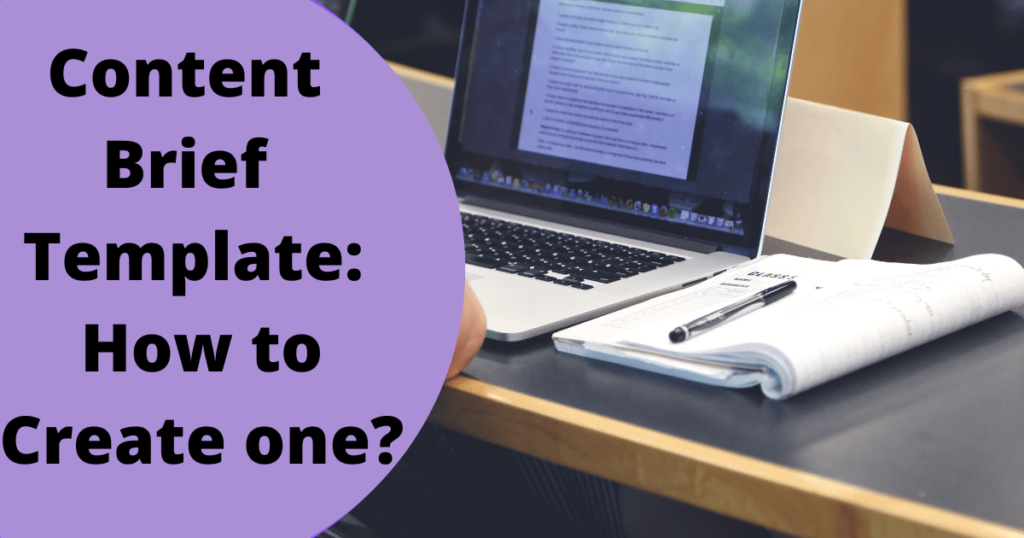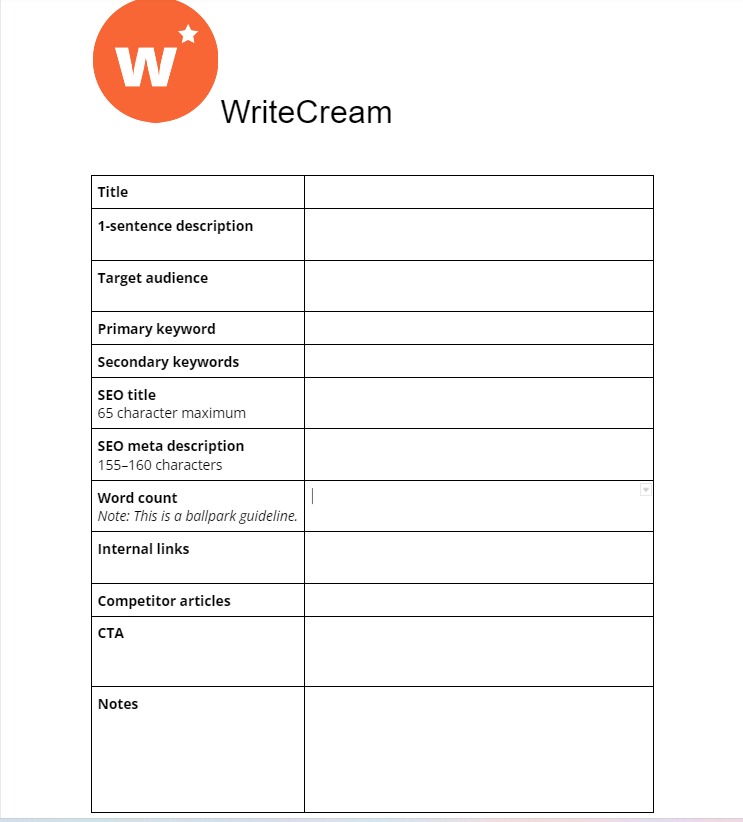
Content projects often don’t turn out as you had hoped. No matter how hard you try, something will inevitably go wrong. How do you stop your content from deviating so much? Only with a content brief can we stop content creation from straying so far off the path. Making sure the creators have all the information they require before writing a blog post is simple to do by using a template for a post short. Giving a thorough and precise content brief can help you avoid tiresome rewrites.
Here’s a link to the Writecream content brief template in Google Docs. To understand it better, make a copy of the shared template and use it. However, to learn more about the content briefs in depth, keep on reading.
What is a content brief?
A content brief, which contains all the details a writer will need to produce content that fulfills your needs, is a crucial reference tool. This document can be a useful tool for writers writing any material. For example blog posts, eBooks, white papers, site copy, email campaigns, or video scripts if it is used properly. A brief contains information on the target audience, content goals, important points, structure, and reference materials.
Beginners Guide Content Brief
At first, formatting a content brief may seem a little intimidating, but the best course of action is to organize the information in a shareable document If you are unsure of how to use a content brief, don’t worry. You’ll find a step-by-step content brief guide for beginners on this page.
Target Keyword
You must first select a perfect keyword that fits your content. It would help in raising your search engine ranking and undoubtedly enhance your SEO. Your post will certainly be easier to find with the help of the target keyword.
Audience/Country
Your target audience is the one for which you develop your content. These are the demographics and followers who would respond most strongly to your content. Before creating or promoting any content, it is essential to have a clear understanding of the target audience.
SEO meta description
It is the description that displays in the Google search results underneath the SEO title. This is your opportunity to entice readers with content other than just your title. Google will occasionally disregard it and place whatever they want there. Make sure to put a keyword there because Google will bold any related keywords from the user’s search.
User Intent
The user intent, also known as the search intent, describes the aim or objective a user of the internet has when they enter a keyword into a search engine. Individual keywords are no longer the deciding element in search engine rankings; instead, user intent has taken center stage in content and SEO.
Tone of voice
Your content’s “tone of voice” describes the impression it adopts. How you communicate with your online audience will determine how involved, informed, and motivated they are to take action. Your tone of voice should reflect all that your users and marketability.
Suggested Page Title
The title should state that it is intended for beginners and contain the target keyword. The tool for a content brief can help with this difficult process as it should be appealing and catchy.
Word Count
Your target word count should be between 1000-1500 as going over that may compromise the quality of your article.
CTA
CTA (call to action) is an invitation to take some desired action. A call to action is common in persuasive writing. CTA is frequently included at the end of a blog post or video after the brand has made its point.
When to Use a Content Brief?
A content strategist creates a content brief for freelance or in-house writers at the beginning of an editing project. Once the cost or budget has been determined and the statement of work has been approved by all parties, it is typically delivered. It’s fine for some of the details in a content brief to be repeated from the statement of work. It’s crucial to provide the writer with as much information as you can at the outset of a project to prepare them for a good output. No matter what the writer you’re working with—a skilled freelancer or in-house writer who is familiar with the editorial needs, and objectives, or a fresh writer you’re just getting to know, a content brief is a smart idea. By providing the writer with a content brief, you make the assignment’s specifics crystal clear, greatly simplifying their task.

What Are The Benefits of Using a Brief Template?
A strong content brief helps ensure that your first copy is more thorough, accurate, and meets all of your needs. In addition to helping your writer, it also ensures that you are clear about your expectations, the objectives of the work, what you are delegating, and many other things. You can be sure that your writer will be equally puzzled if you’re uncertain about some things. We cannot let it happen. A strong content brief will assist you in engaging your writer, making them feel comfortable. It motivates them to collaborate with you, hopefully repeatedly. Additionally, it increases transparency and makes it simpler for writers to participate in the content generation process. It will make writing a cup of tea for your writer. Therefore, f your brief is effective, your writer will ask you fewer questions and the procedure will go more quickly.
What Should Your Content Brief Contain?
- It is critical to specify your desired content length in a content brief. The length of your content can only be a factor in the success of your page if it is also comprehensive and focuses on the keyword you want to rank for. It must also be relevant to satisfy a user’s search query. To ensure this, research your target audience to determine who will be consuming your content.
- Topic Suggestions are another important aspect of the content brief. If you don’t have any idea in mind, there are several approaches you can take to find one. By using various search engines, you can conduct audience research to identify your customers’ major pain points.
- If you’re starting a new blog, think about who your target audience is and how you want to define your brand through your tone. Your audience should always be at the center of your attention, and keep in mind that you can adjust for audience niches. The tone is extremely important, so get it right. Many writers will frequently request a sample of something you’ve written, something that’s already on your blog, or a tone that you like from another online article.

What is the significance of content briefs?
Writing a project without a content brief can be confusing because you won’t know what you’re supposed to do. You might be able to write something, but it will be meaningless to what you want to write. So, before you begin writing, it is best to review a brief. A great content brief ensures that everyone understands what the writer will produce. It also helps in avoiding massive rewrites and multiple rounds of revisions.
You can help writers create the kind of comprehensive content that search engines love by highlighting the subtopics, facts, and questions that you want to be included in the content. This prevents writers from omitting critical content requirements such as up-to-date statistics, reference tables, graphs, and whatever else they deem necessary.
Conclusion
A beginners’ guide to content briefs and the reasons for using a content brief and its template are described above. The introductory basics have all been covered to make things simple for beginners. In conclusion, communicating your ideas effectively is not an easy task as there are many factors to consider throughout the process. It can be simplified if you understand the significance of a few things. These include successfully explaining to your writer the objective of the piece. Also why readers will find your story valuable, and finally using the appropriate SEO language, i.e. keywords. I believe good content can be produced that will help you meet your goals while also keeping the writers and clients satisfied with the work If these steps are taken. Hence, using content briefs will give you a better idea of what you should write in your blog.



